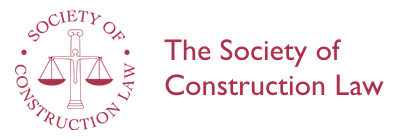Insolvency and its Relevance to the Construction Industry
Bridget Williamson
October 2019
A paper presented to the Society of Construction Law at a meeting in Cambridge on 4th March 2019
This paper provides a general introduction to the insolvency regime established by the Insolvency Act 1986 and the sort of issues to be considered and steps that may have to be taken when insolvency is threatening or affecting a party in a chain of construction contracts. The paper considers the position of an unsecured creditor of the insolvent company and sets out the statutory options of administration and liquidation, the mechanics of these options and the potential problems. The author goes on to explain the mutual dealing provisions and their effect on adjudications, the powers of administrators and liquidators and finally the clawback mechanisms available.
Introduction - Unsecured creditors only - Insolvency - Is the applicant a creditor? - Undisputed debts and cross-claims - Undisputed debts and set-off - A creditor's options when a company appears to be insolvent - How to choose? - The mechanics of invoking the statutory procedures - Administration - Liquidation - Commencement - Administration - Winding up - Why is timing important? - Beware sections 127 and 128, IA - Further consequences of a winding-up order - Making a claim in the administration/liquidation - Insolvency set-off: the mutual dealings provisions - Impact of the mutual dealing provisions on adjudications pursuant to the Housing Grants, Construction and Regeneration Act 1996 - Powers of an administrator - Powers of a liquidator - Clawback mechanisms
The author: Bridget Williamson is a barrister practising at Enterprise Chambers.
Text: 16 pages
